GYSS 2024
Sparking Conversations, Inspiring Science
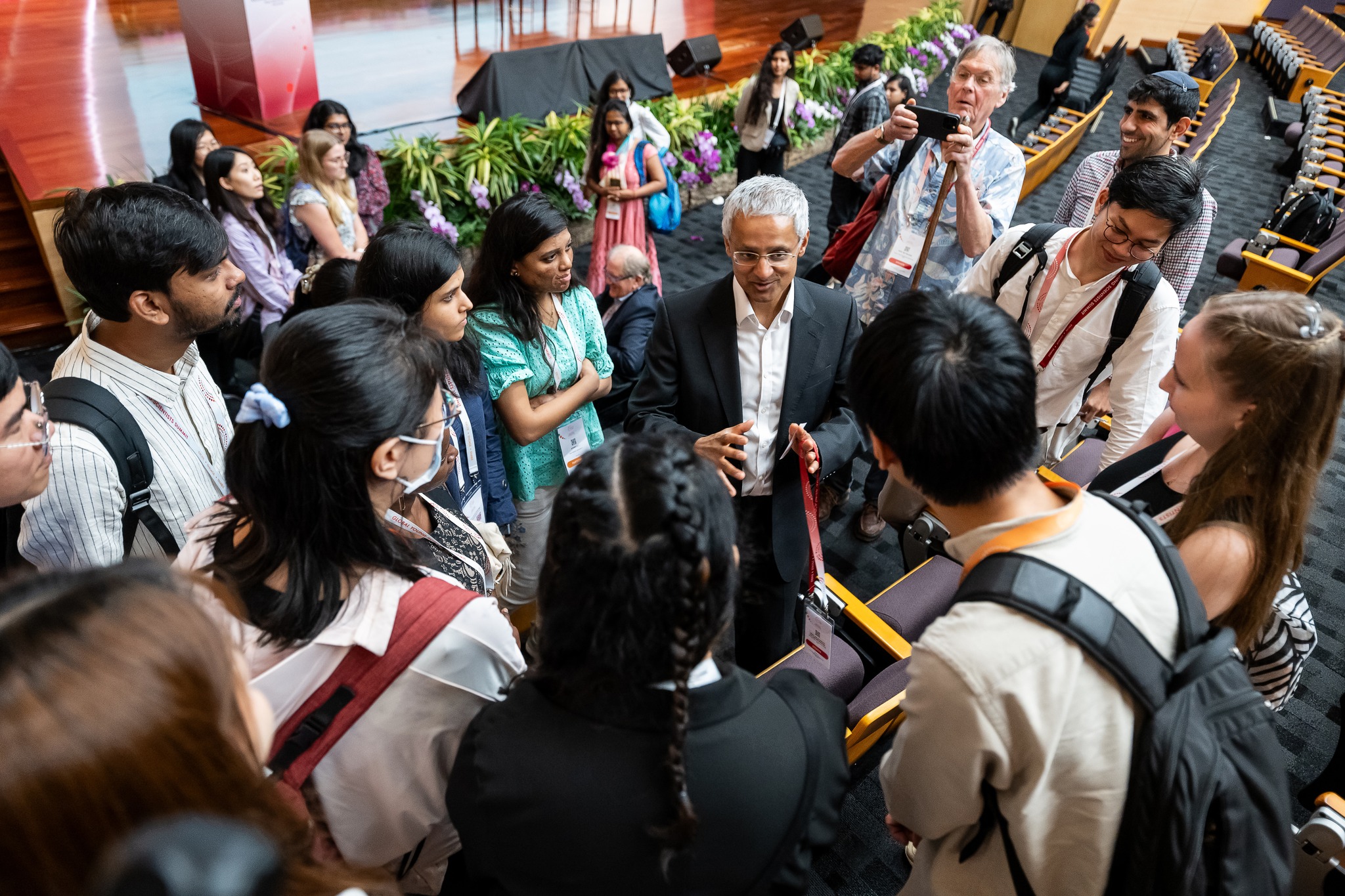
At the 12th Global Young Scientists Summit, young researchers from across the globe gathered to hear from scientists at the top of their fields speak on sustainability, communication, collaboration, building a career in science and more.
Returning for its 12th iteration, the Global Young Scientists Summit (GYSS), organised by the National Research Foundation (NRF) took place from Jan 8 to 12. Across five days, close to 350 young researchers from 35 countries gathered at the National University of Singapore (NUS) – the location of the very first summit in 2013 – to hear from a diverse group of accomplished speakers. Participants were also treated to visits to six institutions and universities across Singapore’s research ecosystem.
Sixteen distinguished speakers and eminent scientists, made up of awardees of the Fields Medal, Millennium Technology Prize and Nobel Prize, were in attendance. On top of engaging the young scientists with insightful plenary lectures and inspiring panel discussions, the speakers also held intimate small group sessions where they answered a myriad of questions from the participants.
The theme of this year’s summit remained ‘Fusion in Session’. Building from last year’s focus on strong partnerships, this year’s speakers continued to share their work and collaborations in and out of the lab – including valuable industry partnerships.

Opening the event, Deputy Prime Minister, Coordinating Minister for Economic Policies and Chairman of the NRF, Mr Heng Swee Keat, encouraged young researchers present to take full advantage of the lectures and panels as well as the opportunities to form bonds with the other participants.
Of Mentorship, Partnership and Family
The opening plenary of the summit was presented by Professor Martin Green from the University of New South Wales. Dubbed ‘the father of photovoltaics’ Prof Green’s work in the 1980s paved the way for the development of more powerful, more efficient and more affordable solar cells that are in use today.
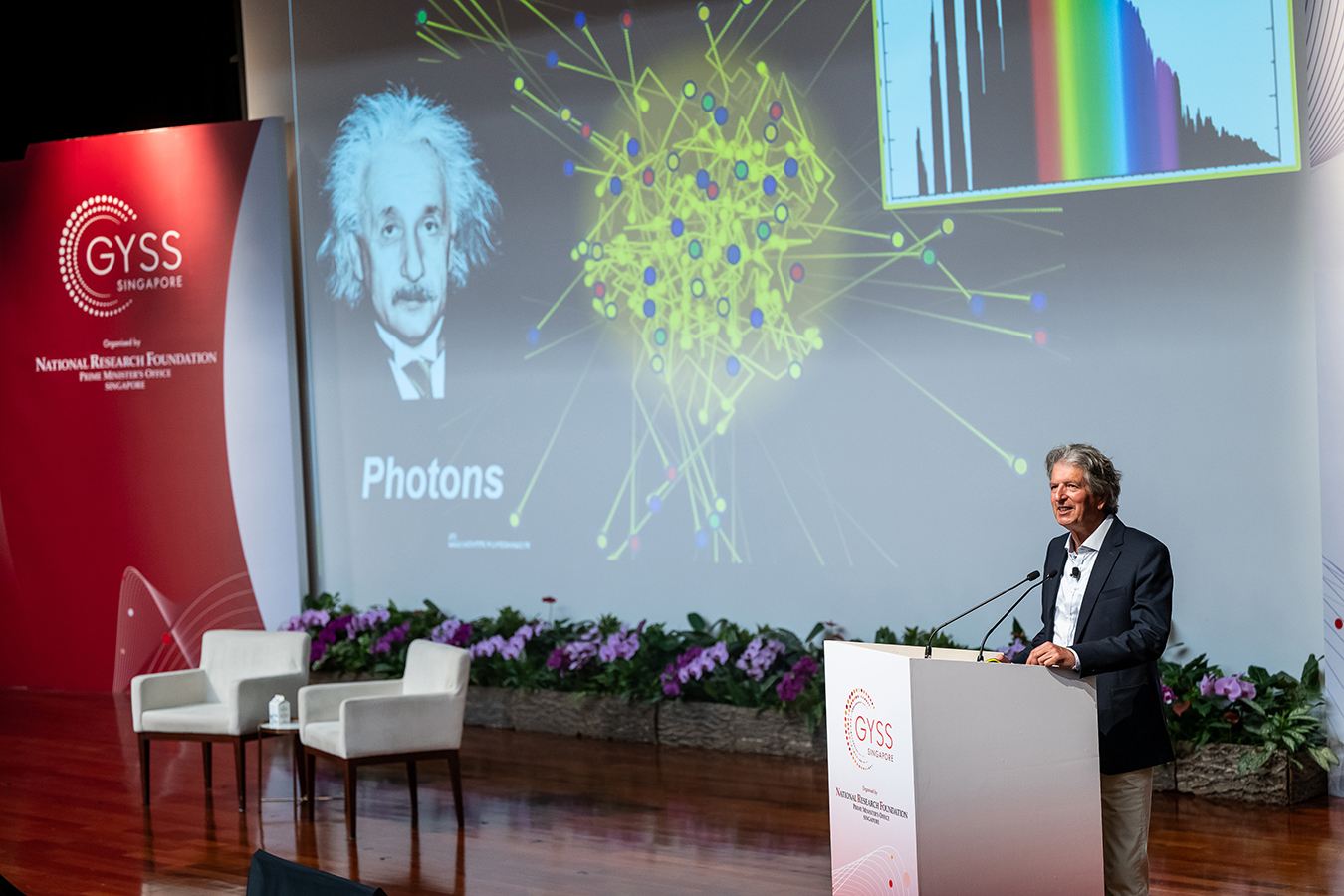
He described his work creating the TOPcon and PERC solar cells at 18 per cent and 22 per cent efficiency – surpassing the best solar cells available at the time. Students under his wing in his lab later went on to harness this technology for mass production, with Prof Green’s help. One success story he shared was Shi Zhengrong, founder of Suntech Power. Shi launched the infrastructure for manufacturing in China and grew the industry. Prof Green explained that, as solar energy becomes cheaper and more efficient, it could play a significant role in mitigating climate change.
During her plenary lecture, Professor Wang Rong shared similar sentiments as she described her work developing another key sustainable technology – membrane reverse osmosis (RO). Prof Wang explained that Singapore is one of the most water-stressed countries in the world. She shared how Singapore uses membrane-based RO to strengthen water production capacities and build self-sufficiency. She also shared her team’s latest developments surrounding novel brackish water RO and seawater RO to further Singapore’s water production efforts.
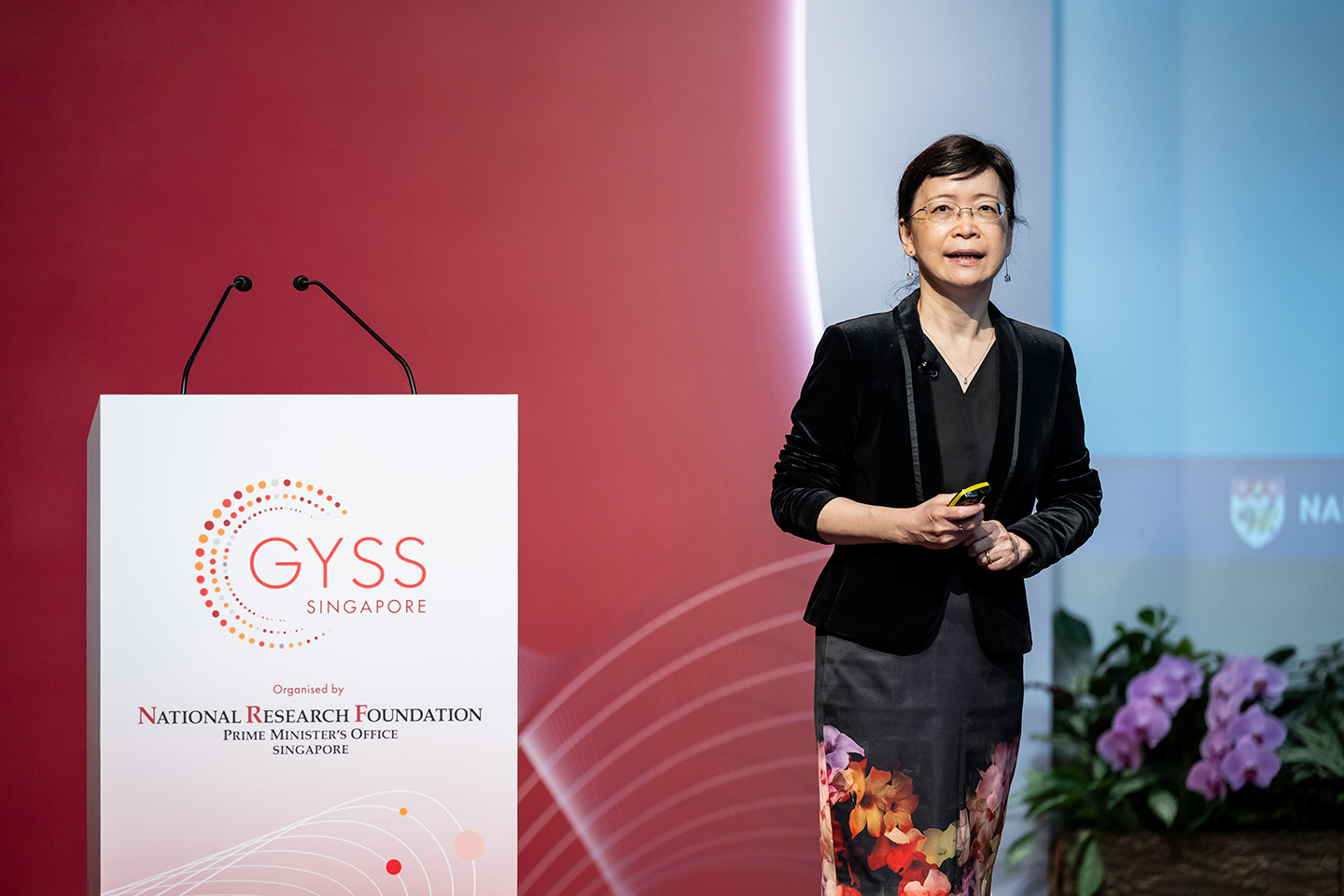
Significantly, Prof Wang pointed out the value of collaborating with industry and government partners to test and implement her membrane technologies – a point she later further emphasised during the panel on sustainability.
One plenary lecture that was particularly moving for the audience was Professor Randy Schekman’s. Prof Schekman is a cell biologist from the University of California and winner of the 2013 Nobel Prize in Physiology or Medicine for his work identifying how different genes control different aspects of transport within cells.

During his lecture, he explained his efforts exploring the molecular and cellular basis for Parkinson’s disease. “We need [a deeper] understanding of the basics of the disease to [comprehend] the meaningful targets that can be approached by medical intervention,” he said.
He also shared a deeply personal story of his connection to the disease, which his wife battled for 22 years before her passing in 2017. As he spoke, the packed auditorium listened with rapt attention. Prof Schekman’s work now includes serving as chair of the scientific advisory board of Aligning Science Across Parkinson’s Disease (ASAP).
“Our goal was to develop a scientific strategy and mechanism to direct the financial donations that our investor Sergey Brin was prepared to make to solve this terrible problem,” said Prof Schekman.
Building a Career in Research
To offer participants valuable insights on building and sustaining careers in research, the GYSS held one panel focused on science communication and another dedicated to discussing challenges and opportunities for early-career scientists.
The first panel of the event, titled Science Communication in the Digital Age: Reaching and Engaging a Wider Audience facilitated discussions on misinformation, communicating controversial topics and the value of communication as a scientist.
The four panellists – Professor Aaron Ciechanover, Professor Sir Konstantin Novoselov, Professor Dame Sue Black and Professor Sir Tim Hunt – began by introducing themselves with stories of success and failure.
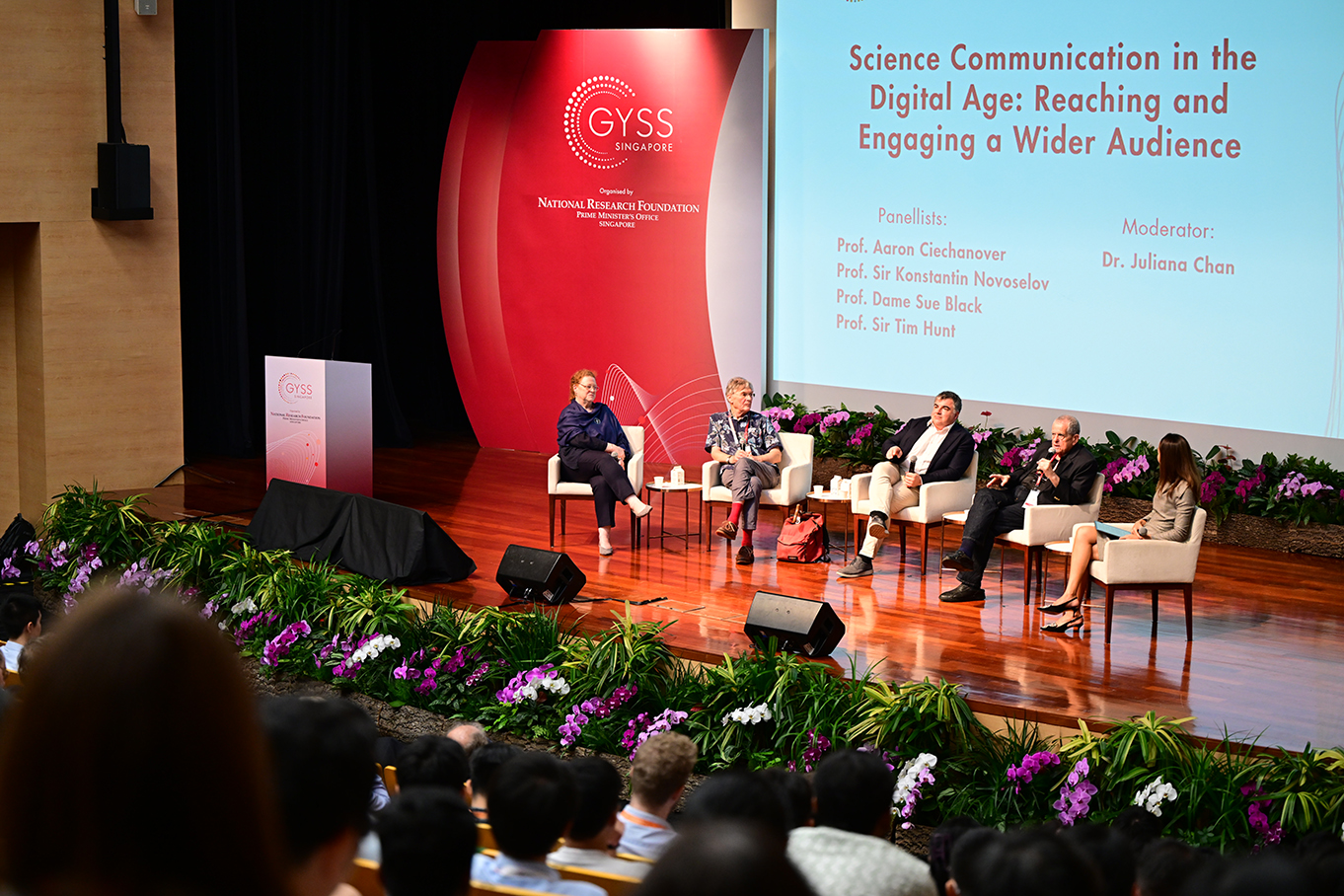
In response to a question from the audience, Prof Dame Sue advised young researchers in the audience to stick to their expertise when communicating controversial topics. She warned against carelessly speaking with media and stressed the importance of building relationships with trustworthy journalists.
Participants also questioned how much time scientists should devote to communication on top of their busy research schedules. While a lot can be left to professional and trusted science communicators, Prof Sir Konstantin believes that everyone has a responsibility to try communicating their work at least once. “If you don’t try it you’re never going to know if you’re good at it or not,” he said.
Prof Ciechanover, on the other hand, believes that because most research is publicly funded, scientists owe it to tax payers to communicate their work and be held accountable. “Taking one day to go to an elementary school and talk to the kids – it’s an obligation and a pleasure,” he shared.
On day two of the event, Professor Adi Shamir, Professor Duncan Haldane, Professor Madhavi Srinivasan and Professor Sir Richard Roberts offered advice to young scientists navigating the research ecosystem as they build their careers.
One major topic of the panel was open discussion – both to develop ideas and champion causes like diversity in research. Prof Haldane emphasised that science is a social activity and encouraged the audience to actively engage with their peers and industry players to develop their work.

In addition to collaborating, Prof Sir Roberts urged young scientists to speak up at all points in their career for values and ethics they believe in. “I try to influence people whenever I can,” he said. “If you find something that is not correct—speak up.”
Young Scientists Taking the Stage
Participants also took to the stage during the summit for the Young Scientist Presentation and Young Scientist Quickfire Pitch segments. Ten young scientists shared their work as part of the Young Scientist Presentations and six others pitched ideas in just 8 minutes or less.
Among the presenters were Debsankar Saha Roy, a PhD candidate at the Tata Institute of Fundamental Research and Doreen Mlote from Singapore University of Technology and Design.
In his work, Roy discovered a new mechanism behind neurotransmission. Typically, neurotransmitters act by binding themselves to receptor proteins. Roy’s presented a lipid membrane-mediated mechanism where unreleased neurotransmitters can modulate vesicle fusion on their own.
In her presentation, Mlote shared her work developing strategies for sustainable cities. She explained the important role buildings play and how resources can be repurposed by breaking building designs into layers – offering new ways of extending building lifespan and creating resilient cities.
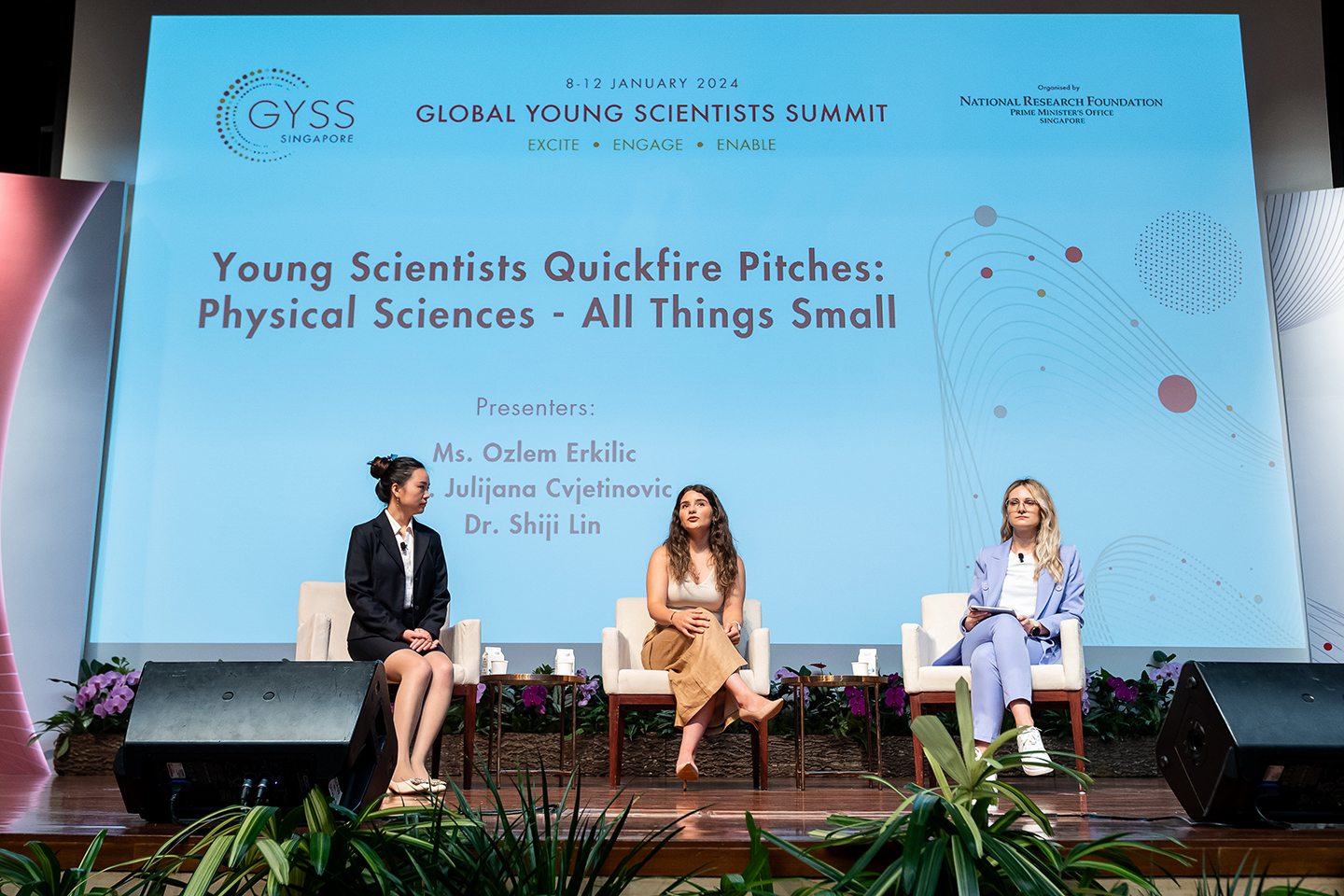
Speaking at the panel on navigating research ecosystems as early-career scientists Professor Madhavi Srinivasan encouraged young researchers – particularly young women – in the audience to find supportive environments and systems. If they cannot be found, she urged them to create such spaces.
“When I was a PhD student, I didn’t have events like GYSS,” she shared. “All of you here are proof that the system is changing and there are more opportunities. The speed can be faster, but things are happening.”
Video and Photo Repositories
To catch up on all the action from the GYSS 2024, here are links to the full video playlists and photos of the various plenaries, panel discussions, and young scientists quickfire pitches:
Here’s more info on the GYSS 2024:

